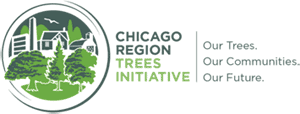By Jessica M. Vogt, Shannon Lea Watkins, Sarah K. Mincey, Matthew S. Patterson, and Burnell C. Fischer
Indianapolis, IN (January 2015) — Tree-planting success in urban environments is not well understood. New research out of Indiana University — Bloomington, uses a data set of over 1300 trees planted in Indianapolis to understand what characteristics predict survival and growth of trees in neighborhood tree-planting projects. Findings suggest that tree characteristics more strongly influence tree growth than survival, and characteristics of the biophysical environment, community, and institutions influence both survival and tree growth.
NFL Indianapolis Colts mascot, Blue, helping to plant trees as part of an effort to plant 2012 trees by the 2012 Super Bowl on the near eastside of Indianapolis.Researchers used tree inventory methods to collect data on the survival, growth, and the socio-ecological growing environment of recently-planted street trees in Indianapolis. They combined Ostrom’s social-ecological systems framework and the Clark et al. model of urban forest sustainability to inform the selection of variables that may influence tree outcomes. A probit model was used to predict tree survival, and multiple linear regression to predict tree growth rate, both with random effects at the neighborhood level.
The following variables are positively related to tree success (survival and/or growth):
- ball-and-burlap or container packaging,
- a visible root flare,
- good overall condition rating,
- the size of the tree-planting project
- planting area width,
- median household income,
- percent of renter occupied homes,
- resident tenure,
- prior tree planting experience,
- correct mulching, and
- a collective watering strategy.
The following variables are negatively related to tree success:
- caliper at planting,
- crown dieback, and
- lower trunk damage.
- Additional variables measured have less clear connections to tree success and should be examined further. Given that models including variables from all four categories of the social–ecological system generally outperform models that exclude some components, researchers recommend that future research on urban tree survival and growth should consider the holistic social–ecological systems context of the urban ecosystem.
Several findings from this research can inform decision-making. Nonprofits have a reasonable degree of choice over the size of planted trees: planting smaller trees will yield trees that become established and grow more quickly in the landscape. They also have some choice in planting location, including the size of the planting area: choosing larger, wider planting areas where possible may yield higher tree growth rates. And locating trees in areas with lower amounts of impervious surface cover may improve survival rates.
However, the research also recognizes that areas with narrow tree lawns and high impervious cover are also some of the areas in highest need of the benefits of trees (Wilson & Lindsey, 2009). They find that many characteristics of the surrounding environment do not significantly affect tree growth for the trees in the research sample, which suggests nonprofits might not need to be concerned about these characteristics when choosing planting locations: for instance, the number of other nearby trees, the speed limit of the adjacent road, and whether the location is a tree lawn or other type of planting spot appear not to influence tree success.
Maintenance practices, however, do matter: Correct mulching practices positively impact tree growth rates, suggesting that investment in mulching or training the community to mulch will yield improvements to tree success.
Read the complete research: “Explaining planted-tree survival and growth in urban neighborhoods: A social–ecological approach to studying recently-planted trees in Indianapolis,” Landscape and Urban Planning
